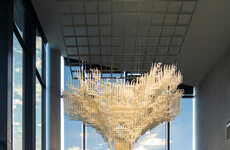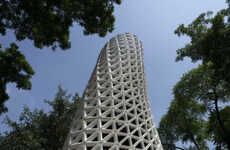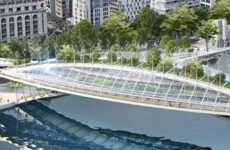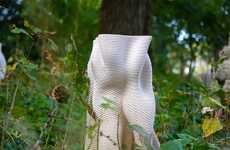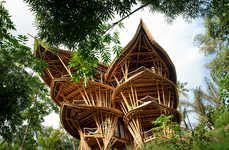
Urban Algae Canopy by ecoLogicStudio Cleans Air in Metropolises
Meghan Young — July 4, 2014 — Eco
References: ecologicstudio & psfk
The Urban Algae Canopy is not simply a public sculpture create to make its immediate surrounding more interesting. It was designed to clean the air in cities. The first of its kind, it "uses micro-algae photosynthesis to produce the same amount of oxygen as four hectares of woodland" as well as up to 330 pounds of biomass per day, reports Psfk. Part of a movement called algaetecture, the Urban Algae Canopy could make a huge impact on people's lives as well as the environment.
Designed by ecoLogicStudio, the Urban Algae Canopy boasts a custom-designed four-layer ETFE cladding system and a CNC welded frame. Part of the studio's HORTUS series, the bio-digital structure will be part of the EXPO Milan 2015 Future Food Project curated by Italy-based architectural practice Carlo Ratti Associati.
Designed by ecoLogicStudio, the Urban Algae Canopy boasts a custom-designed four-layer ETFE cladding system and a CNC welded frame. Part of the studio's HORTUS series, the bio-digital structure will be part of the EXPO Milan 2015 Future Food Project curated by Italy-based architectural practice Carlo Ratti Associati.
Trend Themes
1. Algaetecture Movement - The algaetecture movement could bring significant benefits to the construction industry by rethinking building materials and eco-friendly infrastructure designs.
2. Bio-digital Structure Design - The bio-digital structure design presents fantastic business opportunities for architects to create sustainable and eco-friendly urban structures.
3. Micro-algae Sustainable Solutions - The use of micro-algae for sustainable solutions could disrupt the agriculture and food industry as a feasible source of biomass.
Industry Implications
1. Architecture Industry - The algae canopy represents untapped opportunities for architects to create more sustainable and eco-friendly structures in urban environments.
2. Construction Industry - The construction industry stands to benefit from a potential shift towards more eco-friendly building materials such as micro-algae.
3. Agriculture Industry - The use of micro-algae for sustainable solutions could disrupt the agriculture and food industry as a feasible source of biomass.
6.4
Score
Popularity
Activity
Freshness


